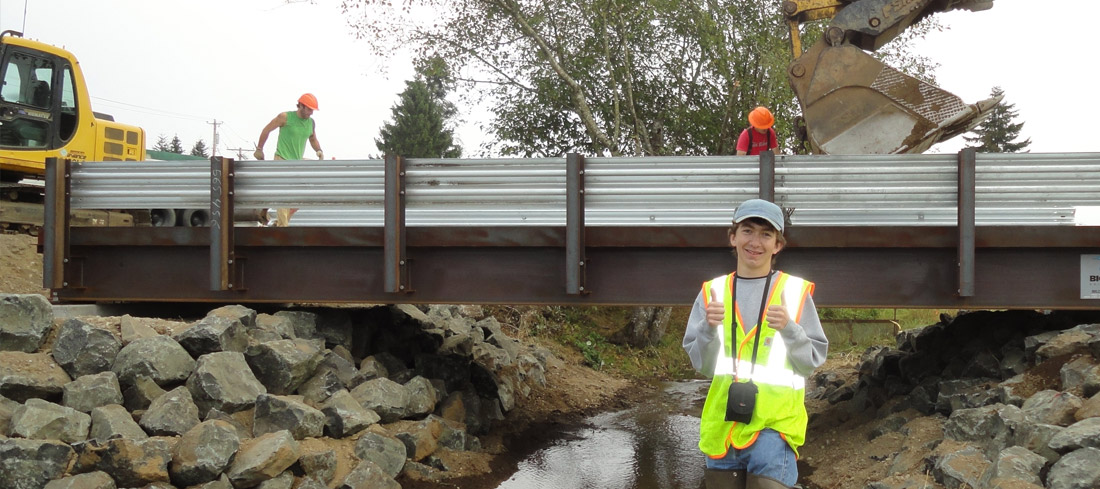Everyone in the Chehalis Watershed has a Role in Protecting and Restoring Salmon

For Grant Applicants
Overview
Have you been approached about being a sponsor of a salmon grant for the first time? Have you sponsored a project before and just want a reminder about this year’s process? This section is here to help! The information below is for you if you are a:
- Local agency (County, City, Port)
- State agency working in the Chehalis Basin
- Native American Tribe
- Nonprofit (Land Trust or other Non-profit organization)
- Conservation District
- Regional Fisheries Enhancement Group
- Landowner with land in the Chehalis Basin
Types of projects funded through SRFB:
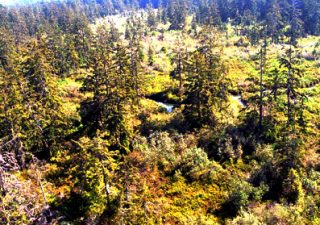
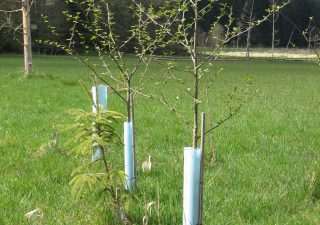
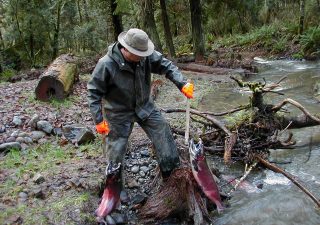
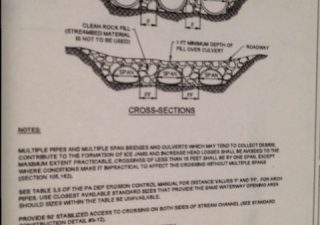
Desired Projects
The goal of the Chehalis Basin Collaborative for Salmon Habitat is to help get funding for projects that will do the most to help salmon in the Chehalis Basin. The Habitat Work Group is working on identifying the types of projects needed to address high priority needs. Contact the Watershed Coordinator to get the latest resources on what types of projects are high priority.
Steps for Getting Your Project Ready
Do you have a project in mind? This section will help. Salmon habitat projects and activities must employ one or more of the strategies listed in the Chehalis Basin Salmon Habitat Restoration and Preservation Strategy for consideration by the Salmon Recovery Funding Board.
If you don’t know if your project aligns with this Strategy, check:
If you have a project in mind and you want to become a project sponsor:
- Read the Chehalis Basin’s grant program overview guidance document to learn about the specifics of the Chehalis Basin’s program.
- Review the project ranking Criteria used by the Chehalis Basin Collaborative for Salmon Habitat to see how your project will be evaluated.
- If you’re really ready to apply, download Manual 18, the official state guidance on the Salmon Recovery Grants program. This Manual is updated annually, so even if you are familiar with it, check for the latest version to make sure you are following all the appropriate steps.
Things to consider in developing your project:
- If you plan to correct a passage barrier: What other barriers are there upstream? How much habitat is there upstream?
- What species of salmonids are present in the sub-basin?
- What is the landuse in the sub-basin?
- What is the future land use of this sub-basin? What other regulations might affect the future of this sub-basin?
- What is the water quality in this basin?
- What are the salmonid life-stage uses of this basin?
- What are the stream dynamics upstream that will affect this project over the long term?
- How do I develop a stream habitat restoration strategy?
Resources to help answer those questions:
- Stream Habitat Restoration Guidelines. The Washington State Department of Fish and Wildlife’s aquatic habitat restoration guidelines manual.
- Salmon Stock Inventory: Washington State’s Salmonid Stock Inventory, by Washington State Department of Fish and Wildlife.
- Statewide Washington Integrated Fish Distribution. – Find information with an interactive map of the watershed- shows which salmon species are in which streams, and much more. You can also use this tool to create print maps that show how fish use the streams in relation to your project.
- WADOT Fish Passage. This will show you if there is a passage problem on a state highway upstream or downstream of your proposed passage improvement project.
- Washington State Fish Passage. This site shows all recorded culverts and other fish passage structures in the state. Gives information for planning and coordinating barrier removal.
- Family Forest Fish Passage Program. Information about how to fund barrier correction on lands managed for small forestry operations.
- Road Maintenance and Abandonment Plans. Information about barriers on large industrial timber lands.
- Chehalis Basin Fish Passage Barrier Ranking. Everyone interested in correcting a fish passage barrier in the Chehalis should look at this resource to learn what a barrier’s priority is for correction, and learn important information about the site.
- Barrier Inventory WRIA 22&23 Ranking and coordinates.
- Lewis Conservation District Culvert Assessment. Available in the Documents section.
- EPA Water Quality Data: To access water quality data collected by the Chehalis Tribe for the Chehalis River, look for organization code CHEHALIS_WQX.
- Department of Ecology’s Total Maximum Daily Load webpage for the Chehalis Basin. This website describes TMDL plans that cover all of the upper watershed in WRIA 23 and address 303(d) listings for dissolved oxygen (DO), fecal coliform bacteria, and temperature (T) impairments. The site describes current water quality issues, clean-up plans, and actions being taken to fix those problems.
- 2016 water quality monitoring in the Upper Chehalis. Department of Ecology. Site has data on current and historic water quality for a variety of locations throughout the Chehalis
- GIS tools
Steps for Application
Once you are ready to apply:
There are several steps to applying for a SRFB grant in the Chehalis Basin Lead Entity process. Chehalis Basin SRFB grant proposals must be submitted through the Chehalis Basin Collaborative for Salmon Habitat and must meet recovery goals as outlined in the Chehalis Basin Salmon Habitat Restoration and Preservation Strategy for WRIA 22 and 23. A full description of the local process is outlined in Section 9 of this plan.
Steps for application:
-
Fill out a Conceptual Project Form
-
Submit your form to the Watershed Coordinator
-
You will then get a PRISM number, which will allow you to interact directly with the State’s grant managers.
-
Once you have a PRISM number, you can start filling out more forms, available on the State’s website.
Application Timeline
Every year, different components of the Salmon Recovery Funding cycle take place at approximately the same time. See the Calendar for the dates of this year’s grant round. The current year’s schedule can be found here: 2025 Grant Round timeline_CBLE_draft
| Month | Event/Deadline |
|---|---|
| February | Conceptual Project Form Due to Lead Entity Coordinator |
| March | Complete application due in PRISM |
| January - March | Project presentations to Habitat Work Group |
| April | Technical Review Team and State Reviewers visit sites of proposed projects |
| May | Technical Review Team ranks projects |
| June | Final materials due in PRISM and process complete for project sponsors. |
| August | Region submits recommendations for funding, including alternate projects |
| September | SRFB Announces Funding Decisions! |
| October - December | Sponsors develop new project concepts and submit Conceptual Forms as needed |
Other Sources of Project Funding
Whether you’re looking for a match for your Salmon Recovery funding, or your project is outside the scope of Salmon Recovery funding, the list below will help you find financial resources to complete your project:
- Washington State – Brian Abbott Fish Barrier Removal Board (FBRB) Funding is available to address severe fish passage barriers. Funds come from the legislature during its two-year funding cycle. Applications open November 1, 2021.
- Washington State – Family Forest Fish Passage Program (FFFPP) The Family Forest Fish Passage Program provides funding to small forest landowners to repair or remove fish passage barriers. Cannot be used as match for SRFB.
- Washington Coast – Washington Coast Restoration and Resiliency Initiative (WCCRI). The grant program is aimed at proactively addressing the region’s highest priority restoration and resiliency needs and putting people to work restoring coastal lands and waters. Projects must address the region’s highest priority ecological protection and restoration needs while stimulating economic growth and creating jobs in coastal communities.
- Washington State – Washington Wildlife Recreation Program. Includes category for funding habitat conservation. Lead Entities may apply for riparian protection funding, but must provide a 50% match in resources contributed to the project.
- USDA/WCC – Conservation Reserve Enhancement Program (CREP) The Conservation Reserve Enhancement Program pays landowners a lease fee in exchange for creating and planting fenced riparian buffer areas. These voluntary riparian buffers cannot be cropped or grazed, and must be maintained for 10 to 15 years, depending on the lease. In addition to the annual rental payment, the program reimburses the cost of fencing and planting. Funding is mostly from the US Department of Agriculture’s Farm Service Administration, with a state cost share provided through the Washington Conservation Commission.
- Natural Resources Conservation Service (NRCS) – Environmental Quality Incentives Program (EQIP) Provides financial and technical assistance to landowners (farmers, ranchers and foresters) that will improve habitat for salmon. NRCS funds planting, fencing, irrigation improvements, barrier correction, instream habitat improvements, and more. Read more here.
- Chehalis Basin Strategy – Aquatic Species Restoration Plan Projects The Chehalis Basin Strategy is a program with a dual objective or reducing flood damage and improving aquatic species habitat. Learn more about funding available for habitat projects on the Aquatic Species Restoration Plan page.
- US Fish and Wildlife Service. Grants for improving habitat for aquatic species are awarded annual. Click here for the latest grant overview.
- Water Quality Grants Applications for the following grants are due once per year, with applications accepted in September. See website for this year’s deadline.
- Department of Ecology – Centennial Grant Program This program is funded by state dollars, provided primarily via the State Building Construction Account. The Centennial program provides grants for water quality infrastructure and nonpoint source pollution projects to improve and protect water quality. Eligible infrastructure projects are limited to wastewater treatment construction projects for financially distressed communities. Eligible nonpoint projects include stream restoration and buffers, on-site septic repair and replacement, education and outreach, and other eligible nonpoint activities.
- Department of Ecology – Clean Water Act Section 319 Grant Program The federal Environmental Protection Agency (EPA) provides Section 319 grant funds to Washington State with the state required to provide 40 percent match in funding. The Section 319 program provides grants to eligible nonpoint source pollution control projects similar to the state Centennial program.
- Department of Ecology – Clean Water State Revolving Fund Loan Program Provided for by the federal Clean Water Act (CWA), the Clean Water State Revolving Fund (CWSRF) program is funded via an annual EPA capitalization grant, state matching funds, and principal and interest repayments on past CWSRF loans. This program provides low interest and forgivable principal loan funding for wastewater treatment construction projects, eligible nonpoint source pollution control projects, and eligible Green projects.
- Department of Ecology – Floodplains by Design Details about the RFP, the application process, and our new Floodplains by Design Funding Guidelines are available at Floodplain Management | SEA Program | Washington State Department of Ecology
- **New** A Funding Library for the Washington Coast! This website has a comprehensive list of the above funding programs, and more! Includes upcoming funding program deadlines.
How to Find Partners
The following resources may be useful in developing and implementing your project:
- Habitat Work Group. Attend a Habitat Work Group meeting and learn what others working on restoration and protection in the Chehalis are doing. Meeting schedule can be found on our calendar.
- Washington Conservation Corps. The Hood Canal Salmon Enhancement Group can provide a crew to implement riparian planting, large woody debris placement, and other projects. For more information, contact Tamara Cowles: tamara (at) pnwsalmoncenter (dot)org / (360) 275-3575, ext 24
- Other restoration and conservation groups. By working together we can combine skill sets and accomplish great things. Consider reaching out to another organization working in your area:
Region Sponsor Contact Lower Chehalis/ Grays Harbor Chehalis Basin Fisheries Task Force http://www.cbftf.com/ Lewis County Lewis Conservation District https://lewisconservation.wordpress.com/ Lewis County Lewis County Public Works https://lewiscountywa.gov/departments/public-works/ Grays Harbor County Grays Harbor Conservation District https://www.graysharborcd.org/ Thurston County Capitol Land Trust https://capitollandtrust.org/ Thurston County Thurston Conservation District https://www.thurstoncd.com/ Mason County Mason Conservation District https://www.masoncd.org/ Basinwide Trout Unlimited Alex Gustafson alex.gustafson(at)tu.org Middle Chehalis Chehalis Confederated Tribes https://www.chehalistribe.org/ Chehalis Basin Chehalis River Basin Land Trust http://www.chehalislandtrust.org/ Chehalis Basin Wild Fish Conservancy http://wildfishconservancy.org/ Chehalis Basin Ducks Unlimited https://www.ducks.org/Washington Lower Chehalis/ Grays Harbor WA Dept. of Fish and Wildlife Megan Tuttle, Region 6 megan.tuttle(at)dfw.wa.gov Centralia City Limits City of Centralia http://www.cityofcentralia.com/ ^ Scroll the table above left and right.

For Landowners
Are you interested in making a stream on your land a better place for salmon?
If so, the information below can help. The Chehalis Basin Collaborative for Salmon Habitat coordinates getting State Salmon Recovery Funding to public and private landowners to conduct voluntary restoration and protection on their land. Since 1999, we have helped get funding to 141 projects around the Basin. The types of projects that have been completed in our basin include:
- Removing barriers to salmon migration
- Planting native shrubs and trees on stream banks
- Installing large woody material to create habitat in a stream
- Protecting key habitat areas through property acquisition
The following are examples of salmon recovery projects:

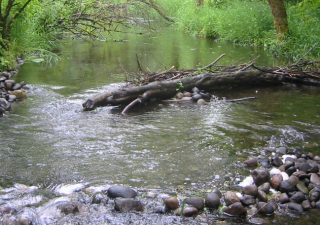
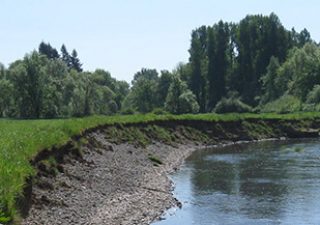
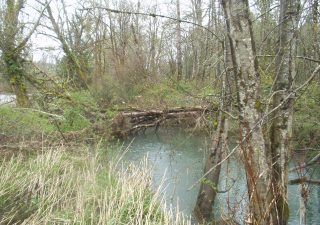
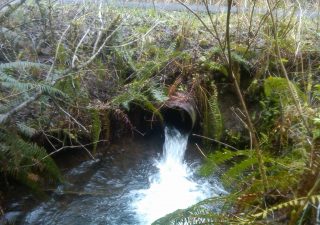
Get Technical Assistance
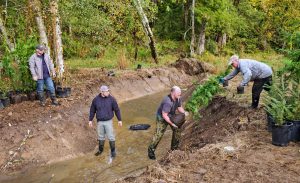
Planting along newly created channel, October 2016
Conservation Districts provide resources to help landowners complete voluntary projects on their land. Each of the four counties in the Chehalis Watershed have their own Conservation District.
- Lewis Conservation District
- Thurston Conservation District
- Grays Harbor Conservation District
- Mason Conservation District
The Conservation Reserve Enhancement Program helps eligible landowners plant trees around streams. The Irrigation Efficiencies program helps private landowners save water and aid in salmon recovery.
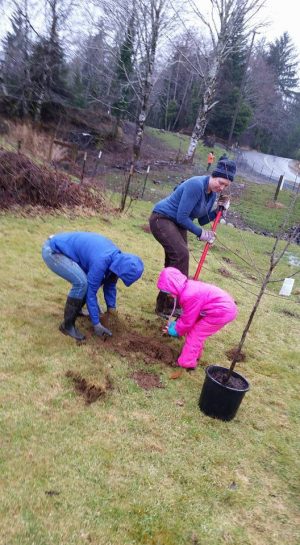 The Natural Resources Conservation Service has other resources to help you out. Their “EQIP” program can pay to replace fish-blocking culverts, plantings, fencing, stock watering, and more. Contact NRCS to get financial and technical assistance to make improvements to your land that will improve its function and benefit salmon. Read More here: NRCS Program Details
The Natural Resources Conservation Service has other resources to help you out. Their “EQIP” program can pay to replace fish-blocking culverts, plantings, fencing, stock watering, and more. Contact NRCS to get financial and technical assistance to make improvements to your land that will improve its function and benefit salmon. Read More here: NRCS Program Details
Chehalis Basin Streamside Landowner's Guide
Your stewardship of the stream on your property has a real, positive
impact in supporting clean water, abundant salmon, wildlife habitat,
drainage, flood control, and erosion control on your property –with
rippling impacts throughout the basin.
Check out: Chehalis Basin Streamside Landowner’s Guide
Chehalis Basin Streamside Landowner’s Guide_12_2024
How to Make your Property "Salmon Friendly"
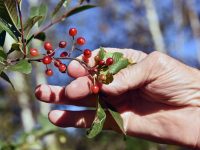 Adding native plants to your land is one way to help recover salmon populations. Below is information about some local native plant nurseries that can help you get started adding native plants to your land:
Adding native plants to your land is one way to help recover salmon populations. Below is information about some local native plant nurseries that can help you get started adding native plants to your land:
- Thurston Conservation District Annual Spring Native Plant Sale. thurstoncd.com; 360- 754-3588, ext. 105
- Black Lake Organic Nursery and Garden Store, 4711 Black Lake Blvd Sw Olympia, WA, www.blacklakeorganic.com
- Rochester Greenhouse – Weyerhaeuser Company, 7935 Highway 12 SW, Rochester, WA (360) 273-5527
- SilvaSeed, 317 James St. Roy, WA, T: 253.843.2246, www.silvaseed.com
- Aldrich Berry Farm & Nursery: 190 Aldrich Rd, Mossyrock, WA (360) 983-3138
- Watershed Garden Works. 2039 – 44th Ave. Longview, WA (360) 423-6456
- Tree Management Plus. Toledo, WA 98591. 360-978-4305
- WACD Plant Materials Center. $500.00 minimum order. 16564 Bradley Rd. Bow, WA: (360) 757-1094, www.wacdpmc.org
- River Refuge Seed Company (native seed only) 26366 Gap Road. Brownsville, OR 97327; (541) 466-5309, www.riverrefugeseed.com
How to Reduce Bank Erosion and Help Salmon
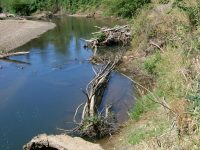 Eroding river banks are prevalent throughout the Chehalis River and its tributaries. Erosion is a natural process, but changes we’ve made in our watershed can make increase the extent and magnitude of erosion. Fortunately, there are techniques for reducing the negative impacts of bank erosion on private property while improving fish habitat. These include:
Eroding river banks are prevalent throughout the Chehalis River and its tributaries. Erosion is a natural process, but changes we’ve made in our watershed can make increase the extent and magnitude of erosion. Fortunately, there are techniques for reducing the negative impacts of bank erosion on private property while improving fish habitat. These include:
- Protecting the existing “first defense” to bank erosion: native shrubs and trees along the river’s edge
- Looking after the “toe” of an eroding bank by leaving wood in a stream, or employing bioengineer approaches to enhance the bank, if needed.
Your local Conservation Districts can visit your property and help determine what sort of work you can do to slow bank erosion on your property. If you live in Mason County, contact Mason Conservation District, Thurston County, contact Thurston Conservation District, for Lewis County residents, contact: Lewis County Conservation District. In Grays Harbor County, contact: Grays Harbor Conservation District. The WA State Department of Fish and Wildlife (WDFW) can help determine what kinds of projects you can get a permit for on your land. If you live in Lewis County, contact: Karen Adams, karen.adams@dfw.wa.gov. In Grays Harbor County, contact: Megan Tuttle, megan.tuttle @dfw.wa.gov. WDFW is working on an Erosion Management Program for the entire Chehalis Basin. For more information: Erosion Management Program – Chehalis Basin Strategy.
Living With Beaver
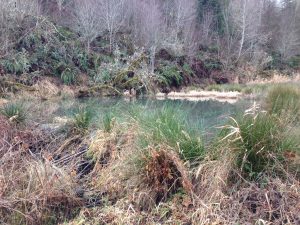
Beaver and their habit of creating ponds provide many benefits to watersheds and salmon, but their activities on the land can be distressing to landowners. There is an organization called “Beavers Northwest” that has tips about how to co-exist with beaver. They’ve put together a brochure, available for download here, with more information on their website:
Got Beavers? Coexistence Strategies.
For more information about Beaver in the Chehalis Basin, read these publications: Beavers: Vital for Salmon and a Healthy Chehalis Watershed and Beavers Build Climate Resilience and Help Salmon
Learn More about Your Stream
Do you know what kinds of fish use the streams near your property? Do you know if fish migration is blocked by barriers upstream or downstream? To answer those questions, check out “SalmonScape“, an interactive online map with information about fish in streams throughout Washington. 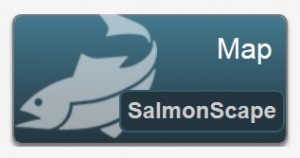
How to Find a Project Sponsor
If you want to get started on completing a salmon recovery project on your land, your first step is to find a Project Sponsor in your area. The Salmon Recovery Funding grant application process is complex and competitive, and having a Sponsor who has gone through this process before will increase your chances of getting your project funded. If the project is successfully funded by the Salmon Recovery Funding Board, the Project Sponsor also implements the project. Consider contacting a local Conservation District or Fisheries Enhancement Group in your region to ask if they would serve as your project’s sponsor. Sponsors of past projects in our watershed include:
| Region | Sponsor | Contact |
|---|---|---|
| Lower Chehalis/ Grays Harbor | Chehalis Basin Fisheries Task Force | http://www.cbftf.com/ |
| Lewis County | Lewis Conservation District | https://lewisconservation.wordpress.com/ |
| Lewis County | Lewis County Public Works | https://lewiscountywa.gov/departments/public-works/ |
| Grays Harbor County | Grays Harbor Conservation District | https://www.graysharborcd.org/ |
| Thurston County | Capitol Land Trust | https://capitollandtrust.org/ |
| Thurston County | Thurston Conservation District | https://www.thurstoncd.com/ |
| Mason County | Mason Conservation District | https://www.masoncd.org/ |
| Basinwide | Trout Unlimited | Alex Gustafson alex.gustafson(at)tu.org |
| Middle Chehalis | Chehalis Confederated Tribes | https://www.chehalistribe.org/ |
| Chehalis Basin | Chehalis River Basin Land Trust | http://www.chehalislandtrust.org/ |
| Chehalis Basin | Wild Fish Conservancy | http://wildfishconservancy.org/ |
| Chehalis Basin | Ducks Unlimited | https://www.ducks.org/Washington |
| Lower Chehalis/ Grays Harbor | WA Dept. of Fish and Wildlife | Megan Tuttle, Region 6 megan.tuttle(at)dfw.wa.gov |
| Centralia City Limits | City of Centralia | http://www.cityofcentralia.com/ |
Watershed Hero Stories
 Everyone has a role in salmon habitat protection and restoration. Below are links to stories about residents of the Chehalis Basin who are working to protect natural resources through work on their land and in their community.
Everyone has a role in salmon habitat protection and restoration. Below are links to stories about residents of the Chehalis Basin who are working to protect natural resources through work on their land and in their community.
Trina Young – Protecting Prairie Habitat, Forests and Parks
Dennis Plank and Gail Trotter – Watershed Heroes
Sammy Fletcher – Volunteering to help restore and protect his local natural community
Sabra Noyes – Creating a wildlife sanctuary as she restores prairie habitat
Lucas and Paterka Town – Owners of “Root Cellar” and “Salmon Safe Farm” in Onalaska
Laura Lopez and Sam Howell: inspirational couple join community conservation efforts
Robert and Lecia Criswell team up with neighbors to tackle invasive Japanese Knotweed in the Wynoochee Valley
Grays Harbor College Fish Labbers – passionate about sustainability
Montesano School Teacher is a Watershed Hero
Chanele Holbrook, a Tenino Watershed Hero
Long time Elma farmer nourishes land and wildlife
Rochester man enhances homesite to help preserve natural resources
McCleary resident a Strong voice for the Chehalis Basin
Homeowners association leads charge to enhance its backyard
Elma man helps restore local watershed for resurgent coho
High School scientists monitor and preserve lake for generations to come
Lake Lucinda community celebrates conservation success
Wisner Creek project restores channel, fight back reed canary grass
Oakville Resident transforms untamed pasture into lush oak savannah

For Volunteers
Opportunities to help out in your community: .
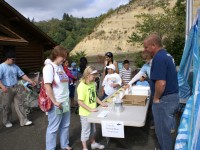
- Lewis County Stream Team — Want to help plant trees and restore water ways in Lewis County? Get involved by contacting Maddie: maddie.wilcox@lewiscdwa.com
- Centralia Stream Team: Want to be a part of the solution to creek pollution? Join the Centralia Stream Team, which has focused their efforts on cleaning up and restoring their beloved community creek “China Creek” that flows through the City of Centralia. For more information, please contact Kim Ashmore (360) 330-7512 or email kashmore@cityofcentralia.com
- Grays Harbor Stream Team: The Grays Harbor Stream Team is a coalition of
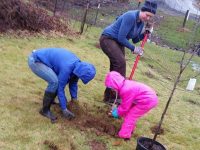 citizen volunteers, local agencies, and non-profit organizations dedicated to the protection and restoration of streams that flow through the Chehalis River and into Grays Harbor. Projects include trash removal and invasive species removal from the shorelines of area streams and the estuary, as well as outreach and education about the sources of biological pollution, and what citizens can do to make Grays Harbor’s waterways cleaner. To join their mailing list, write to: streamteam@graysharborcd.org.
citizen volunteers, local agencies, and non-profit organizations dedicated to the protection and restoration of streams that flow through the Chehalis River and into Grays Harbor. Projects include trash removal and invasive species removal from the shorelines of area streams and the estuary, as well as outreach and education about the sources of biological pollution, and what citizens can do to make Grays Harbor’s waterways cleaner. To join their mailing list, write to: streamteam@graysharborcd.org. - Chehalis River Basin Land Trust
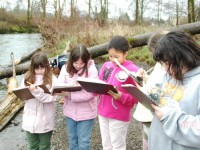 : Is a non-profit organization dedicated to preserving natural lands in the Chehalis River Basin. Currently they have over 4,000 acres of protected land. Follow the link to find out about their volunteer opportunities. Or contact office@chehalislandtrust.org
: Is a non-profit organization dedicated to preserving natural lands in the Chehalis River Basin. Currently they have over 4,000 acres of protected land. Follow the link to find out about their volunteer opportunities. Or contact office@chehalislandtrust.org - Clean Streams and Memes: Clean Streams and Memes is a movement to clean up the garbage off the riverbeds, shorelines, and creek banks in the Grays Harbor area of Washington. They have had weekly cleanup events on most weeks since the program started in February of 2013.
- Capitol Land Trust. Capitol Land Trust and its members have conserved more than 3,500 acres, and 39.5 miles of river shoreline, across 25 sites in the Chehalis watershed, including oak woodlands, forests, unique wetlands, working ranches and farms. Over 2,100 of those 3,500 acres are located in the Black River Watershed.
![]() Chehalis Basin Partnership
Chehalis Basin Partnership ![]() Clean Streams and Memes
Clean Streams and Memes 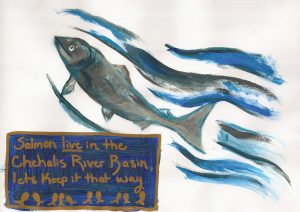

Picture by Michaela Wagoner, Age 16
Here are some fun volunteer activities you can do in your own neighborhood.
Fish Passage Viewer Tour: How to find the nearest fish passage in your neighborhood or town and share what you find with the Grays Harbor Stream Team.
Backyard Invasive Plant Removal: How to identify, remove, and dispose of common invasive plants and share with the Grays Harbor Stream Team.
Neighborhood Cleanups – Social Distancing Style: How to safely pick up garbage in your area and share with the Grays Harbor Stream Team.

For Educators and Students
Here are some documents for reading and sharing, and videos for watching!
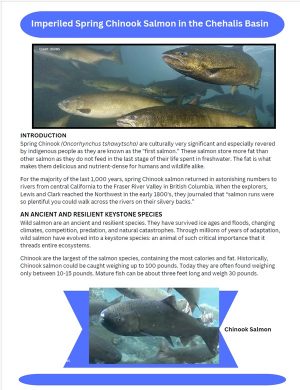
Spring Chinook in the Chehalis Basin! Read this comprehensive overview of this imperiled salmon species.
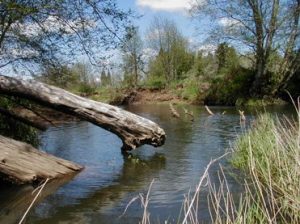
Wood in Water is Good for Salmon Did you know that wood in the water provides diverse, complex habitat for salmon and other creatures. The more complex a system is, the better it is for fish!
Protect Your Local Chehalis Basin Salmon. This two-page fact sheet identifies key actions like following current fishing regulations and removing rock dams you can take to protect our local Chehalis Basin salmon, including our imperiled spring Chinook salmon.
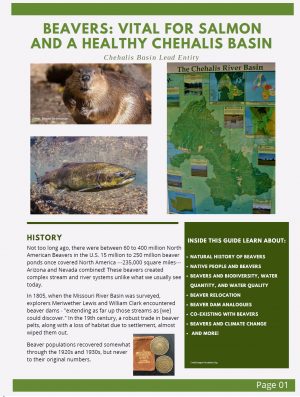 Beavers: Vital for Salmon and a Healthy Chehalis Watershed. Beavers do amazing things that help our watershed and salmon. Learn everything you ever wanted to know – and more – in this comprehensive guide to the work of these ecosystem engineers. Watch a video of a Chehalis River beaver lodge here!
Beavers: Vital for Salmon and a Healthy Chehalis Watershed. Beavers do amazing things that help our watershed and salmon. Learn everything you ever wanted to know – and more – in this comprehensive guide to the work of these ecosystem engineers. Watch a video of a Chehalis River beaver lodge here!
To learn more about how beavers help build climate resilience while helping salmon, check out: Beavers Build Climate Resilience and Help Salmon.
There are many ecological services that beavers provide!
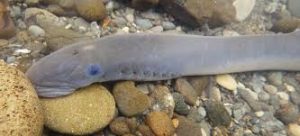 The Pacific Lamprey is an interesting anadromous fish native to the rivers of the Pacific Northwest to learn more about this ancient fish read this fact sheet!
The Pacific Lamprey is an interesting anadromous fish native to the rivers of the Pacific Northwest to learn more about this ancient fish read this fact sheet!
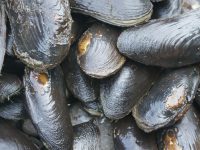
Chehalis Basin Native Freshwater Mussels! Click on the title to learn how our native mussels can live up to 100 years old and work hard to keep our rive water clean! Additional resources on how to conduct restoration projects without hurting mussels can be found here:
Conservation Guidelines
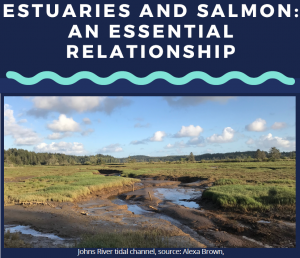
Click here to download this Estuaries & Salmon, an Essential Relationship PDF document:
![]() Conserve Water, Protect Salmon. Here are tips on what you can do to conserve water at home and keep water in our streams where salmon need them.
Conserve Water, Protect Salmon. Here are tips on what you can do to conserve water at home and keep water in our streams where salmon need them.
~ ~ ~ ~ ~ ~ ~ ~ ~ ~ ~ ~ ~ ~ ~ ~ ~ ~
These documents summarize the details of the biologically distinct parts of the Chehalis, known as Ecological Regions, as is described the Aquatic Species Restoration Plan. Make sure to click on the pictures and links for more information!
Cascade Mountains Ecological Region
Chehalis Tidal Ecological Region
Lower Chehalis River Ecological Region
Olympic Mountain Ecological Region
Willapa Hills Ecological Region
Want something educational to watch?
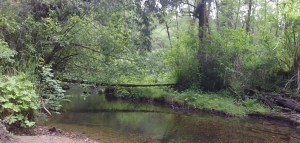
Here is the link to a virtual riparian zone tour: https://youtu.be/NkqRpHKxdow.
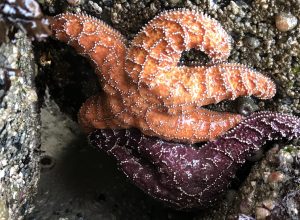
Here is the link to a virtual tide pool tour: https://youtu.be/8R8m7q8ldzE
See underwater images of spawning Chum Salmon in the East Fork Satsop by clicking here!
Learn about how improving fish passage helps salmon — Watch here!
Diagram of a Salmon Life Cycle: All of our work to help salmon needs to be grounded in understanding when the different life stages of salmon are living in freshwater streams. This 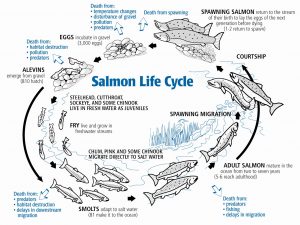 life-cycle diagram is the first step.
life-cycle diagram is the first step.

